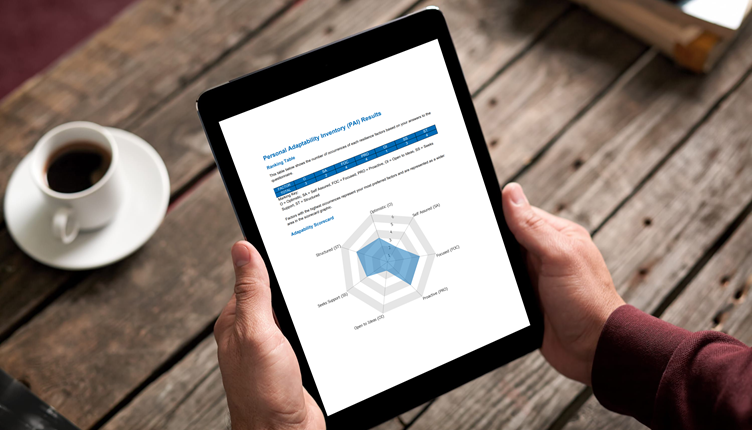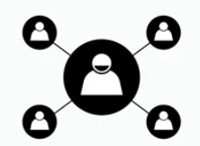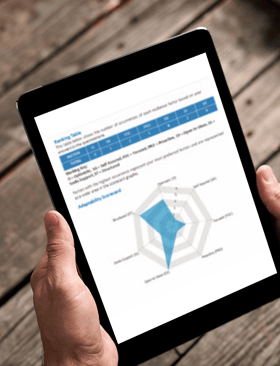If recent levels of disruption have taught us anything it is that businesses need to expect the unexpected.

The sheer speed, scale and depth of the change brought to personal and working lives is unrelenting and unprecedented. But are there lessons can we take from the experience of the last 20 months or so, that can help us improve organisational responses and performance in future periods of rapid and unpredictable change?
One key area is to proactively build organisational resilience – which means that your teams feel confident to take a risk and step out to face business challenges head-on. It’s something that Gartner has identified in their research – where they talk about the need shift the focus from efficiency first to resilience.
Why? Put simply, what were real strengths for organisations in a more stable business environment – stability and process efficiency – quickly became their Achilles’ heel in a fast-moving, highly disruptive world, which was changing daily as opposed to quarterly or 6 monthly.
The organisations that have thrived through disruption have been the ones that had focused on developing their resilience pre-pandemic. With leadership and teams in place that were able to take a more adaptive approach to the Tsunami of change they were facing – and show a real ability to bounce back stronger in the face of it.
5 key tips for building organisational resilience
An organisation is a collection of diverse individuals who are grouped together by purpose.
Which means understanding the collective resilience levels of teams and groups across an organisation helps to determine whether there can be critical mass, when it comes to connecting and engaging with change. This also determines how quickly and deeply the organisation can take on the new methods, skills and tools needed for success. And the extent to which early efforts can be sustained to ensure they sustain their efforts to 'make change stick'.
To build resilience at an organisational level, we need to create the right infrastructure that will foster and sustain it. In particular, this means:
1. Hiring people for key change roles who have high levels of personal adaptability
In addition to the knowledge, skills, and abilities needed to perform core job activities organisations need to factor resilient characteristics into assessment centres, recruitment, and selection processes.
2. Managers having practical ways to role-model resilience for their teams
 Leading by example is not a new concept, and it has been found to be one of the most powerful forces for change in an organisation. In fact, managers and team leaders being conscious about their own resilience - demonstrating how things should be done and making their own development process visible to others - are the model and real example of growth and learning for their team.
Leading by example is not a new concept, and it has been found to be one of the most powerful forces for change in an organisation. In fact, managers and team leaders being conscious about their own resilience - demonstrating how things should be done and making their own development process visible to others - are the model and real example of growth and learning for their team.
3. Leaders aligning a culture to support resilience building
 Culture plays a major role in any organisational adjustment. Initiatives that are counter-cultural are less likely to succeed. So, it's important that leaders create a culture that:
Culture plays a major role in any organisational adjustment. Initiatives that are counter-cultural are less likely to succeed. So, it's important that leaders create a culture that:
- places high value on people's adaptability
- provides the training, coaching and reinforcement to strengthen people's adaptability levels to their full potential
- rewards positive responses to adversity
- collects and shares stories of resilience to facilitate organisational learning and development
4. Leaders actively managing the change load on the organisation
Resilient organisations and adaptive change leaders are constantly and proactively scanning the environment. Assessing change demand and reviewing priorities to ensure that there is capacity in reserve to deliver business critical initiatives.
And ensuring that levels of resilience are not severely depleted by change overload.
5. Encouraging people to step out and take risks
People need to know it is 'ok' to step out, take a risk and try new things. An organisation can unwittingly discourage risk-taking if it makes it difficult for people to try out new behaviour by:
discourage risk-taking if it makes it difficult for people to try out new behaviour by:
- measuring people’s results and performance with those new behaviours too soon
- or punishing failures rather than using them as platforms for learning.
However, resilience and personal adaptability are not a panacea.
And they need to be developed in conjunction with broader change capability building activity. However:
- An organisation with resilient people - as well as systems, processes, and accessible learning - is an organisation that can be more agile and proactive in its approach
- And a proactive organisation is better able to adapt to meet the changing needs of its market - which becomes even more essential in times of high disruption
|
How our Personal Adaptability Inventory (PAI) and development system can help |
|

|
If you are looking to boost change capacity, with highly resilient individuals and teams, then our Personal Adaptability Inventory with its built-in development system can help:
Contact us to try the PAI out for yourself and start a conversation around licensing this for your team or your organisation. Or learn more here. |



Leave a comment